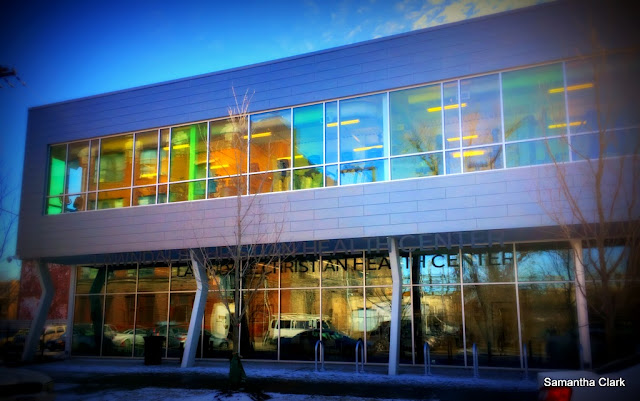My daughter wanted to find a sovenier from Mexico. She was about to leave on a solo three-week trip to Germany. One of the people she was planning to meet asked if she could bring him a Mexican trinket from Chicago. Back in Albuquerque, where we used to live, the request would have been easy. Now that we lived in Hyde Park we would have to travel to another part of the city to find it.
“Really?” I asked. I was in a grumpy mood. Did we really have
to spend an afternoon buying a two-dollar trinket before she left? Finally, she
made a peace offering. She volunteered to go tour a new neighborhood with me.
I started looking online at Mexican retail shops. We’d
already been to some of the neighborhoods listed, including Bridgeport and Pilsen.
Some of the shops on the north side of the city would take a couple hours, each
way, to reach on public transportation from our home. We would have to make at
least 3 route transfers.
Looking at the distant areas in the north I didn’t know how
I was going to get there in the future. At some point I was going to have to
make the trip. I decided not to worry about it now. So far, I was managing to
find my way around. During my project answers have had a way of appearing when
I need them.
The obvious solution to our current dilemma was to shop in the
Little Village of Lawndale, a neighborhood of primarily Mexican immigrants. I’d
read that their 26th Street has the second highest amount of retail
revenue along any street of Chicago. Only the Miracle Mile on North Michigan is
higher. Little Village sells more goods than State Street in downtown.
Since we were familiar with the neighboring Pilsen, we took
the pink line L one stop further west to the Kedzie stop. Whether the station
is located in North Lawndale or Little Village depends on the map consulted.
The two block walk south from the L station to the Metra train tracks did seem
like a “no man’s land” with trash piled as high as my knees as we crossed under
the Metra bridge.
We arrived in the Little Village neighborhood in mid-afternoon
as the schools were letting out. Groups of kids and families were everywhere on
the streets. I instantly felt safe when surrounded by women and children. I’ve
since read that encouraging groups of immigrants to settle in troubled
neighborhoods has been shown to reduce crime rates.
The area was a stark contrast to my previous neighborhood
visit of East Garfield Park. Whereas Garfield Park’s streets were mostly barren
of people or commercial businesses, even in the middle of the day, the Little
Village was full. Neighbors seemed to know each other and would stop to chat in
small groups. More strikingly, the area was bursting with small, local
merchants.
Part of the explanation was culture. There was a spirit of
entrepreneurship and commitment to shop the local merchants. But partially it
was the architecture. There must have been hundreds of tiny, affordable stores spaces
to rent. Shops could flourish because they have the physical space to do so in
a concentrated area.
Even beyond the main commercial corridors there were plenty
of tiny shops and corner stores among the homes. When buildings are being torn
across the city, sadly, tiny storefronts like these are not being replaced. As
the weather was mild for March I also saw lots of card tables set up on
sidewalks to sell even more goods.
The greatest difficulty we had getting around the
neighborhood was trying to cross the busier streets. There were few traffic
lights and cars often didn’t stop for pedestrians in the cross walks. I watched
other people have the same problem trying to get to the other side.
As we walked my daughter noticed a store full of religious
icons. Inside we found ourselves in the Costco of religious supplies. There
must have been hundreds of each item, most still in their boxes stacked on
shelves. My daughter found a small icon to take on her trip. After hunting
through numerous bottles of spiritual oils, and noticing the stack of voodoo
dolls, it dawned on me the store catered to more than the local Catholics.
Later, when I checked on Google for voodoo supplies in
Chicago, nothing was listed for Little Village. It made me wonder what else I
might find tucked away in the stores. I plan to return to treasure hunt through
the shops.
Afterwards, we wandered into a cheese shop with a full size
statue of a cow in front. We were given samples of their white Mexican cheese to
sample in soft, medium and hard varieties. I bought a couple to take home. I
would later eat the hard as string cheese snacks. The medium I used to bake a
delicious pan of black bean green chile cheese enchiladas.














































